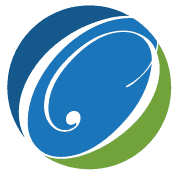 Customer engagement is the cornerstone of capture, and yet many Government contractors miss out on building customer intimacy and all of its perks. They either start too late in the game, or are in touch with only one or two people who may not be the decision makers or who won’t talk to them, or wait until the industry day to find out who the customer is—when it’s way too late to influence acquisition strategy and other important facets of a procurement. Luckily, there are numerous professional tools out there to help capture managers figure out who the customer is early, and navigate customer organizations like a pro.
Customer engagement is the cornerstone of capture, and yet many Government contractors miss out on building customer intimacy and all of its perks. They either start too late in the game, or are in touch with only one or two people who may not be the decision makers or who won’t talk to them, or wait until the industry day to find out who the customer is—when it’s way too late to influence acquisition strategy and other important facets of a procurement. Luckily, there are numerous professional tools out there to help capture managers figure out who the customer is early, and navigate customer organizations like a pro.
Subscribing to Deltek GovWin IQ and other tools is only half of the solution, however. The other half is knowing how to get the maximum value from your company’s investment.
What if capture managers knew exactly what to look for in each of the leading capture intelligence tools? How much could they gain from using professional research techniques, and correlating multiple sources of data to answer specific business development questions; and then translate this information into strategic actions? What if they could identify the customer one or two years ahead of the RFP issuance and take early steps in learning who the customer is?
At an APMP International Bid & Proposal Con, I presented a workshop where business developers and capture managers focused on the exact step-by-step techniques for:
- Identifying the full gamut of U.S. federal customers for an upcoming bid;
- Using three paid capture and business development tools, Centurion Research, Deltek GovWin IQ, and Carroll Publishing, and open-source data to correlate information and identify key decision-makers; and
- Learning the techniques for initiating contact, recognizing hot buttons, and building lasting customer relationships.
I put attendees through the paces of learning the methodologies for achieving these goals, and demonstrated information available in the tools with play-by-play recipes of how to find the right actionable intelligence. We cross-checked information from multiple sources, and discussed scenarios for applying this information to gain customer intimacy.
I started the workshop by introducing the attendees to OST’s agile, non-linear approach to capture, showcasing how customer engagement plays a key role in positioning to win. We then proceeded with identifying six types of Government customers:
- Buyers such as Source Selection Authority (SSA), Procuring Contracting Officer (PCO)
- Users such as Program or Project Manager (PM), APM, and often the Contracting Officer’s Technical Representative (COTR, COR);
- End Users such as the recipients of the program’s benefits;
- Technical Experts such as technical “eyes and ears,” who often work for a Scientific, Engineering and Technical Assistance (SETA) contractor;
- Champions or someone inside the customer organization who wants your solution, likes you, and coaches you on how to navigate through the sticky wickets; and
- Sponsors that work at the highest levels of the Government to allocate the budget and ensure that the project is executed well.
Upon this introduction, we examined a case study, selecting a relatively small, $7.4 million Seaport-e Task Order about a year away from issuance, to make this exercise more realistic. Larger opportunities enjoy more information in the capture tools, whereas I wanted to pick something harder, with more deductive work required to succeed.
The workshop’s next step was to go through the customer contact plan template and the types of information required:
| Contact Plan Field | Sample Information |
| Customer Name, Title, Organization | Cindy Welsch, Contracting Officer, NAVFAC Southeast |
| Frequency | Monthly |
| Message to convey | Acme’s capabilities, specific innovations in the engineering processes, commitment |
| Information to gather | New requirement, preferred technology, near-term activities, procurement schedule |
| Contact History | Visited three times in the past four months, communicated …, gave presentation on … |
| Contact report requirement with date completed, and next steps | Visit report completed June 9, 2012, see updated action items, follow-ups required, next visit plan ready |
| Role (Buyer, User, End User, Technical, Champion, Sponsor) | Buyer |
| In Source Selection Team? Yes, No, Maybe | Yes |
| Profile (Be Tactful!) | Loyal, no-nonsense, but hard to get to know initially; rule-oriented |
| Friend, Enemy, Neutral | Neutral |
| Hot Button 1 | Low-risk – everything has to go smoothly |
| Hot Button 2 | People she trusts to get the job done |
| Hot Button 3 | Conservative, does not like anything flashy |
We then examined information from Deltek GovWin IQ, including opportunity description and organization chart. The chart wasn’t granular enough to reach down to the right office, but provided value from the standpoint of understanding the chain of command. It was a starting point.
After that, we correlated GovWin IQ’s opportunity information with information in Centurion Research Solutions. Interestingly, there was an additional name on the list of customers in the opportunity, and there were some slight differences from GovWin IQ. This was an additional piece for the customer mosaic we were putting together.
Our final tool was a Carroll Publishing’s organization chart for the office listed as the customer in our case study. Surprisingly, although the chart was very detailed, it was still hard to deduce exactly where the program lived, although the audience made some educated guesses.
To cover all the bases, we consulted the Web and found an org chart there as well, providing additional insight into the customer.
As everyone discovered in the process of an exercise, every piece of data brought us closer to understanding the full list of customers involved in the planning and shaping of the opportunity, providing a solid foundation for an action plan. An action plan, however, was necessary to take this investigation further, through phone calls, questions, and customer visits. As we went through the exercise, we filled out the customer contact plan, deciding where we could call first. Just like with any contact, we searched on LinkedIn, seeking to gain some insight into the “six degrees of separation” and who could get us introductions to the customer.
Upon introductions, the next action step was to learn about the customer-specific hot buttons. Hot buttons include core needs and requirements, preferences and pet peeves, frustrations, ambitions, tolerance for risk, external and internal pressures, written and unwritten requirements, subcontractor preferences, methodology likes and dislikes, and so on. In the workshop, we went through an explanation of how to identify and recognize hot buttons from a variety of capture activities. For example, a good indicator of a hot button is a customer dwelling on a certain subject, repeating the same words. There are also clue words that betray a hidden issue. For example, when a customer uses words like “lessons learned” or “could be improved,” there may be more to the story. Similarly, an emotional reaction to a subject could be another clue.
I introduced questions to ask a customer on how to discover hot buttons. I also shared a few ideas for hot buttons if it is late in the game, and you are scrambling to find common, not-to-deep but potentially impactful insights that would likely strike a chord with the customer.
At the conclusion of the workshop, we discussed the next steps and contact strategies to reach the contacts, build a relationship, and enact four goals of working with the customer: relationship building, information gathering, shaping of the requirements, and vetting of your solution. This was a hard-core, information-packed training session with everyone working hard to complete tricky exercises and learn new skills.
If you need a clear strategy to take your company to the next level of growth, you would like to get your win rate up or are in need of a robust pipeline of opportunities in your sweet spot to make sure you bid and win more, we can assist with jump-starting and sustaining your growth in the federal market. Outsource your Business Development to our experts and find Government contracting opportunities in your core competency areas. Contact us so we can help your business gain a foundation for a robust bid engine that will fuel your growth for years to come. Learn more at www.ostglobalsolutions.com/federal-business-development
P.S.: If you need business development, capture management, proposal management and writing, or onsite proposal training support using OST’s proprietary methodologies, contact us (301) 384-3350 or email [email protected]. We have supported 18 out of the top 20 Federal Contractors and have won $19 Billion for our clients not counting the IDIQ ceiling values. We are here to help you to solve your proposal resource problems in a pinch!
Best regards,
OST Global Solutions, Inc.
…Because There is No Second Place in Proposals! TM
https://www.ostglobalsolutions.com
Contact us to learn more.
